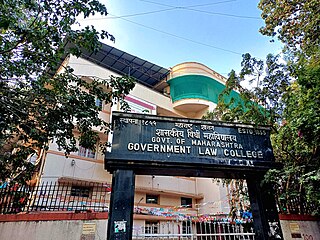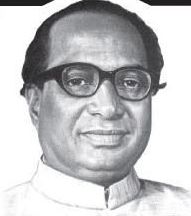
Shivraj Vishwanath Patil is an Indian politician who was the Minister of Home Affairs of India, from 2004 to 2008 and 10th Speaker of the Lok Sabha from 1991 to 1996. He was Governor of the state of Punjab and Administrator of the Union Territory of Chandigarh from 2010 to 2015. Previously, he served in the Indira Gandhi and Rajiv Gandhi cabinets as Minister of Defence during the 1980s.

Shekhawat is a clan of Rajputs found mainly in Shekhawati region of Rajasthan. Shekhawats are descendants of Maharao Shekha of Amarsar. Shekhawat is the most prominent sub-clan among Kachhwaha Rajputs. The Shekhawati region was ruled by them for more than 500 years and are honoured with the hereditary title of “Tazimi Sirdars”, whom HH the Maharaja of Jaipur receives by rising from his seat. Fought against mughals many time. Rao Sujjan Singh of Chhapoli fought mughal army with 300 men to save a temple. Col. J.C. Brooke in his book, Political History of India, wrote that “For the recruitment of Horse-army there is no region in India at par with Shekhawati.” Shekhawat is a very common surname in the Indian defence forces.

Prathibha Devisingh Patil is an Indian politician and lawyer who served as the 12th president of India from 2007 to 2012. She was the first woman to become the president of India. A member of the Indian National Congress, she also served as the Governor of Rajasthan from 2004 to 2007, and was a member of the Lok Sabha from 1991 to 1996.

The Government Law College, Mumbai,, India, founded in 1855, is the oldest law school in Asia. The college, affiliated to the University of Mumbai, is run by the Government of Maharashtra.

Devisingh Ramsingh Shekhawat was an Indian agriculturist and politician who served as the first gentleman of India as the husband of President Pratibha Patil. He also served as the first gentleman of Rajasthan and also as mayor of Amravati. He was a member of the Indian National Congress.

Babasaheb Anantrao Bhosale was an Indian lawyer and politician who served as Chief Minister of Maharashtra from January 1982 until February 1983.

Gulabrao Raghunathrao Patil was a Renowned Co-operative Leader, Member of Parliament (MP)-Rajya Sabha India, Maharashtra State Sangli from 1966 to 1978,Member of the Legislative Council (MLC) of Maharashtra 1983−87 and president of Maharashtra Pradesh Congress(I) Committee 1981−82. Patil also served as chairman of Maharashtra State Co-operative Bank in Mumbai from 1980 to 1982, chairman of Sangli District Cooperative Bank Sangli and Secretary of National Co-operative Union of India (NCUI), New Delhi. Gulabrao Patil was regarded as a Maratha Strongman in Maharashtra politics in the 1970s and 1980s. Year 2020–2021 is going to celebrate as Birth Centenary Year of Late. Gulabrao Patil (1921–2021)
Moolji Jetha College, also spelt as "Moolji Jaitha College" (MJC), is a college in Jalgaon, Maharashtra. It was established in 1945 and is one of the oldest Colleges in the northern Maharashtra region.
Dr. Gopalrao Bajirao Deshmukh alias Abasaheb Khedkar, also known as Abasaheb Khedkar was a social activist and a farmer's leader in India. He was the Minister of Rural Development in the first cabinet ministry of Maharashtra and the first President of Maharashtra Pradesh Congress Committee.
Although a parliamentary democracy, Indian politics has increasingly become dynastic, possibly due to the absence of a party organization, independent civil society associations that mobilize support for the party, and centralized financing of elections. Family members have also led the Congress party for most of the period since 1978 when Indira Gandhi floated the then Congress(I) faction of the party. It also is fairly common in many political parties in Maharashtra. The dynastic phenomenon is seen from national level down to district level and even village level.The three-tier structure of Panchayati Raj established in the 1960s also helped to create and consolidate the dynastic phenomenon in rural areas. Apart from government,political families also control cooperative institutions, mainly cooperative sugar factories,district cooperative banks in the state, and since the 1980s private for profit colleges. The ruling Bharatiya Janata Party also features several senior leaders who are dynasts. In Maharashtra, the NCP has particularly high level of dynasticism.
On resignation of Shankarrao Chavan on 26 June 1988, Sharad Pawar was appointed Chief Minister of Maharashtra for the second time. Pawar formed his second ministry, which continued in office until legislative elections in 1990.
Shankarrao Chavan was sworn in as Chief Minister of Maharashtra for the second time in March 1986, on resignation of his predecessor, Shivajirao Patil Nilangekar. Chavan's cabinet served until his resignation on 26 June 1988, and subsequent replacement by Sharad Pawar's ministry.
Shivajirao Patil Nilangekar became the chief minister of Maharashtra in June 1985, on resignation of Vasantdada Patil. He formed a 11-member ministry that served for less than a year until Nilangekar's resignation amidst fraud allegations.
After the Congress (I) party secured a majority in 1980 Maharashtra legislative elections, A. R. Antulay was appointed Chief Minister. Antulay's administration continued until January 1982, when he resigned amidst corruption allegations. Till date, Antulay remains the state's only Muslim chief minister.
After securing a majority in the 1985 Maharashtra legislative elections, the incumbent Chief Minister Vasantdada Patil was re-appointed on 10 March 1985. Patil formed his fourth and last ministry, consisting of 7 cabinet ministers besides him. The cabinet continued for about 3 months, as Patil resigned and was replaced by Shivajirao Patil Nilangekar in June 1985.
Vasantdada Patil was sworn in as Maharashtra chief minister for the third time in February 1983, on resignation of Babasaheb Bhosale. The third Patil ministry continued until 1985 legislative elections, after which Patil continued as chief minister with his fourth ministry.
Vasantdada Patil became the Chief Minister of Maharashtra for the first time on 17 April 1977, replacing Shankarrao Chavan. The government continued until the 1978 legislative elections, after which Patil continued with his second ministry.
Shankarrao Chavan was appointed as Chief Minister of Maharashtra for the first time on 21 February 1975, replacing Vasantrao Naik. His first ministry lasted till 16 April 1977, and was succeeded by Vasantdada Patil's ministry.
Following 1972 Maharashtra Legislative Assembly election, incumbent chief minister Vasantrao Naik was re-appointed, and he formed his third government on 14 March 1972. This was to be Naik's last government which served until 20 February 1975.







